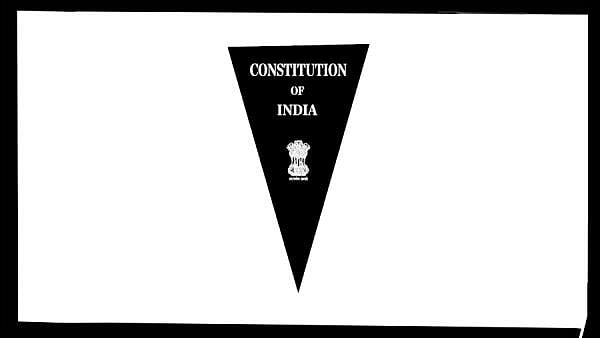
DH Illustration
The debate in the winter session of the Parliament over the Constitution of India and ways to protect the sacred constitutional principles has garnered substantial public attention. All ends of the political spectrum have been fighting to be the custodian of the Constitution and its principles. Several members have also held up the Constitution while taking oaths. The use of the Constitution as a symbol of protest or demonstration is becoming increasingly prevalent over the last few years. Most of the public deliberations and debates on the Constitution is centred around the idea of fundamental rights.
However, the Constitution is much more than just fundamental rights. It is a document that also lays out structures and systems for governance of the country. It establishes the Supreme Court, how a Bill must be passed, when the President or judge of the Supreme Court or a High Court or the Vice President can be impeached. It demarcates the legislative competence of the Parliament and the State legislature to maintain legislative federalism. But it needs to be noted that the conversations on these provisions are mostly confined within the four walls of the courts.
For instance, protests against the Citizenship (Amendment) Act witnessed television news anchors, politicians and even citizens citing Article 14, i.e., the right to equality. However, the farmers’ protest – even though it amassed substantial public engagement – did not witness any serious public interest on the constitutional competence of the Parliament (instead of the State legislatures) to enact the farm laws. Another classic example is of the Aadhaar Act. Most of the discussions around the Aadhaar issue among the public have centred on privacy and data protection, without a proportionate discussion on how the Parliament introduced the Aadhaar Act as a money bill, allowing the government to practically bypass the Rajya Sabha.
How does the rest of the Constitution matter? These provisions of the Constitution on the procedures and the establishment of constitutional bodies are riddled with intricacies. The appointment of judges to the high courts or the Supreme Court is not a matter of mere formality. It is the provision that will determine the independence of the judiciary from the executive and the legislature. If the appointment is made completely at the discretion of the President and the Cabinet, the Supreme Court can be filled with the ruling party’s sympathisers. And if it is left completely to the judiciary, nepotism becomes a distinct possibility. Similarly, despite the Constitution’s guarantee to enforce fundamental rights, if the judge hearing the matter is someone who has made controversial communal statements, like the Allahabad High Court Judge Justice Shekhar Kumar Yadav, the decision might be influenced by the judge’s personal convictions that can cause a miscarriage of justice.
History tells us that fundamental rights can be interpreted in multiple ways. Privacy was held not to be a fundamental right in the 1950s and 1960s. However, in 2017, the Supreme Court, in Justice K S Puttaswamy v. Union of India (2017), held it to be a fundamental right. Therefore, the judges sitting on the bench and deciding the cases matter. The lens and the ideologies through which these judges interpret the Constitution matter. And therefore, the mundane long procedure as to who appoints a judge matters as well, because the judges can widen or restrict fundamental rights on the basis of their interpretation.
GST Council and skewing fiscal federalism
Similarly, the Goods and Services Tax (GST) Council is established under Article 279A of the Constitution. The provision also mentions that every decision of the Council shall be taken by a majority of not less than three-fourth of weighted votes of the members. The Central government has a weightage of one-third and all the states together have a weightage of two-third of the total votes. In other words, even if all the states come together over an issue, they can only accumulate 2/3rd votes (66.66%), while they need 3/4th votes (75%) to pass a resolution.
No decision can be passed in the Council without the Centre being in the majority. This has a significant impact because now, the state governments (and consequently, the electorate of the state constituency) no longer have an effective say over the decisions made by the GST Council, if these decisions are contrary to those of the Central government. This affects the fiscal federal structure of the country and more broadly, the democratic value of the state electorates’ voice in the GST Council.
Even though this does not have a direct impact on the fundamental rights of individuals, it does have an impact on several issues that are linked to fundamental rights. For instance, a high GST on education, medical equipment, insurance, household products, or footwear, will raise the cost of effective realisation of the right to education, health, and the adequate standard of living, among other fundamental rights.
Thus, a better understanding of how the Constitution entails much more than just fundamental rights and a public engagement with the procedural provisions in the Constitution are crucial. While fundamental rights are indispensable to the constitutional governance of the country, how the fundamental rights must be understood and what is their true scope can be influenced and re-shaped by the other parts of the Constitution.
(The writer is an assistant professor at the Alliance School of Law, Alliance University, Bengaluru)